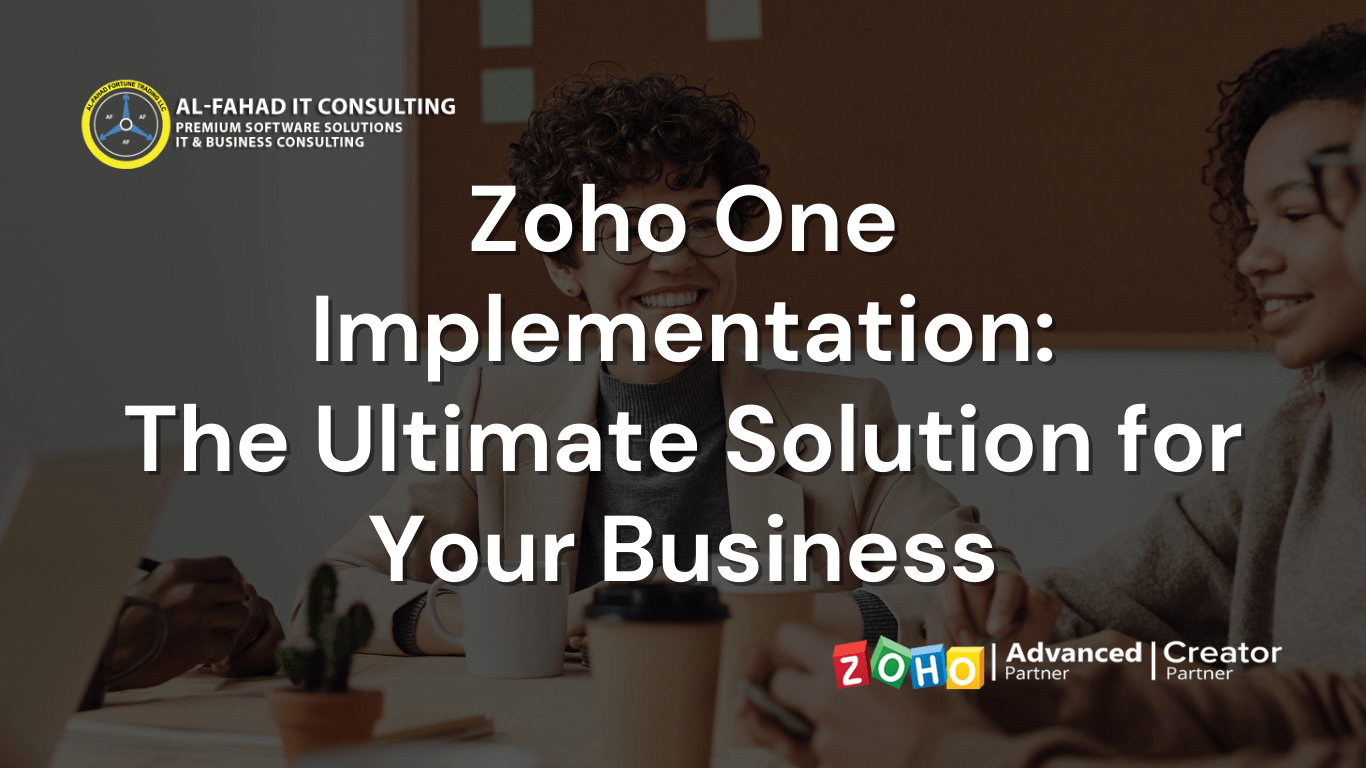AL FAHAD IT CONSULTING2024-01-19T11:14:59+00:00
Zoho One is an all-in-one business software suite that can streamline and automate various business processes. However, implementing Zoho One in your organization can be a daunting task, primarily if you’re new to the platform. This is where Zoho One implementation comes in, and in this article, we’ll discuss everything you need to know about it.
What is Zoho One implementation?
Zoho One implementation refers to the process of setting up and configuring Zoho One for your organization. It involves identifying your business requirements, setting up the necessary modules, and configuring them to match your specific needs. The ultimate goal of Zoho One implementation is to ensure that the platform works seamlessly with your business processes.
Why is Zoho One implementation important?
Implementing Zoho One can help your organization streamline and automate various business processes, resulting in increased productivity and efficiency. Zoho One implementation can help you achieve the following:
- Centralize your business operations: Zoho One can help you centralize your business operations by bringing all your data and processes into one place. This can help you reduce data redundancy, improve data accuracy, and simplify collaboration.
- Improve team collaboration: Zoho One provides various collaboration tools such as email, chat, and project management tools that can help your team work together more efficiently.
- Automate your workflows: Zoho One can help you automate your workflows by setting up workflows for various processes such as sales, marketing, and support. This can help you reduce manual effort, improve accuracy, and save time.
- Gain better insights: Zoho One provides various reporting and analytics tools that can help you gain better insights into your business operations. This can help you make informed decisions and improve your overall performance.
How to implement Zoho One?
Implementing Zoho One can be a complex process, and it’s essential to get it right the first time. Here are the steps involved in Zoho One implementation:
- Identify your business requirements: Before you start implementing Zoho One, it’s essential to identify your business requirements. This involves understanding your business processes and identifying areas where you need to streamline and automate.
- Set up the necessary modules: Once you’ve identified your business requirements, the next step is to set up the necessary modules in Zoho One. This involves creating users, setting up security roles, and configuring various modules such as CRM, finance, and HR.
- Configure the modules: After setting up the necessary modules, the next step is to configure them to match your specific needs. This involves customizing fields, creating workflows, and setting up automations.
- Test and deploy: Once you’ve configured the modules, the next step is to test them to ensure that they work seamlessly with your business processes. After testing, you can deploy the modules and start using Zoho One to streamline your business operations.
Conclusion
Zoho One implementation can be a complex process, but it’s essential to get it right to ensure that the platform works seamlessly with your business processes. By centralizing your business operations, improving team collaboration, automating your workflows, and gaining better insights, Zoho One can help you take your business to the next level. If you need help with Zoho One implementation, consider working with a Zoho One implementation partner to ensure that you get the best results.




Leave a Reply